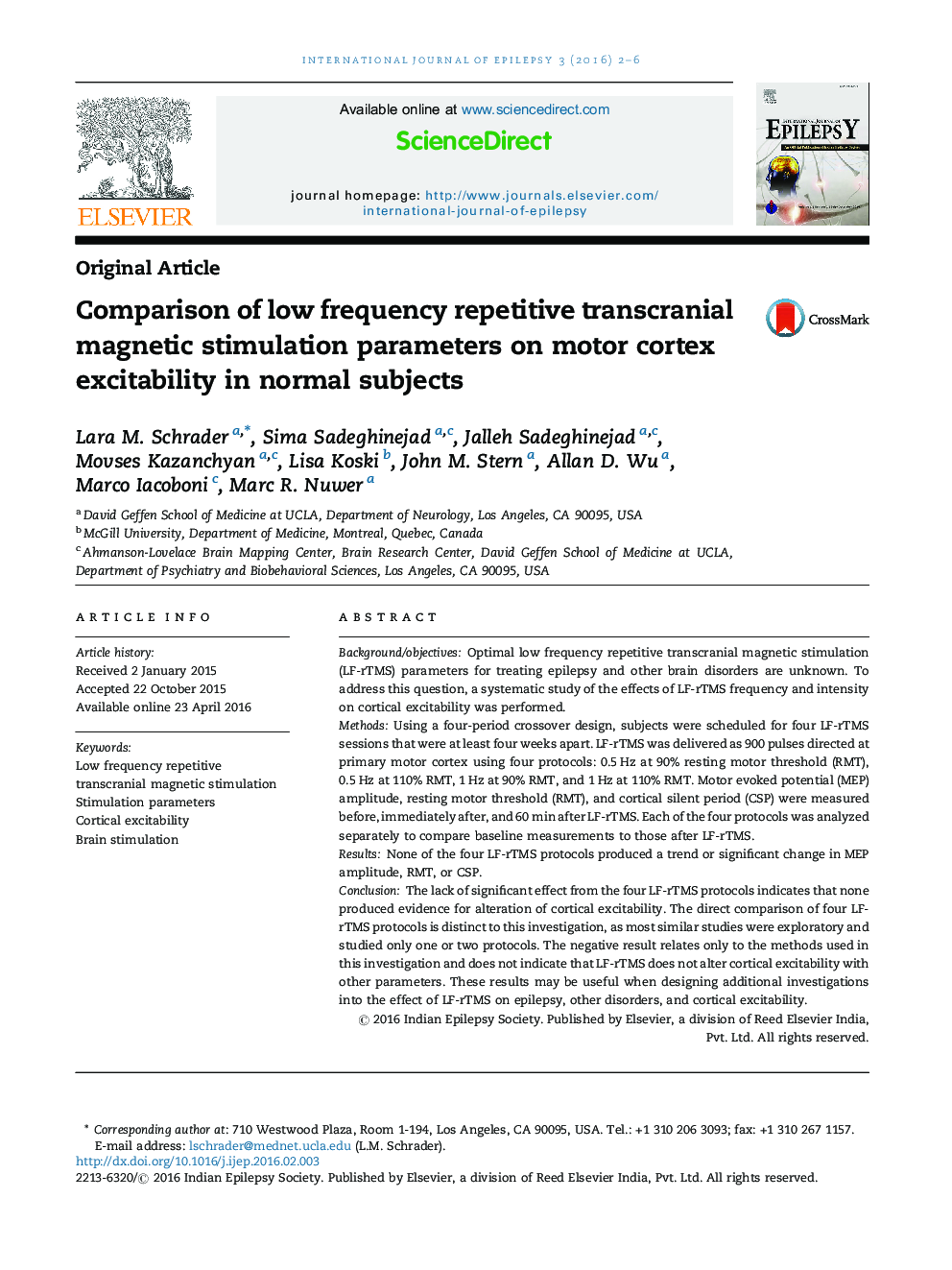| Article ID | Journal | Published Year | Pages | File Type |
|---|---|---|---|---|
| 4318376 | International Journal of Epilepsy | 2016 | 5 Pages |
Background/objectivesOptimal low frequency repetitive transcranial magnetic stimulation (LF-rTMS) parameters for treating epilepsy and other brain disorders are unknown. To address this question, a systematic study of the effects of LF-rTMS frequency and intensity on cortical excitability was performed.MethodsUsing a four-period crossover design, subjects were scheduled for four LF-rTMS sessions that were at least four weeks apart. LF-rTMS was delivered as 900 pulses directed at primary motor cortex using four protocols: 0.5 Hz at 90% resting motor threshold (RMT), 0.5 Hz at 110% RMT, 1 Hz at 90% RMT, and 1 Hz at 110% RMT. Motor evoked potential (MEP) amplitude, resting motor threshold (RMT), and cortical silent period (CSP) were measured before, immediately after, and 60 min after LF-rTMS. Each of the four protocols was analyzed separately to compare baseline measurements to those after LF-rTMS.ResultsNone of the four LF-rTMS protocols produced a trend or significant change in MEP amplitude, RMT, or CSP.ConclusionThe lack of significant effect from the four LF-rTMS protocols indicates that none produced evidence for alteration of cortical excitability. The direct comparison of four LF-rTMS protocols is distinct to this investigation, as most similar studies were exploratory and studied only one or two protocols. The negative result relates only to the methods used in this investigation and does not indicate that LF-rTMS does not alter cortical excitability with other parameters. These results may be useful when designing additional investigations into the effect of LF-rTMS on epilepsy, other disorders, and cortical excitability.
